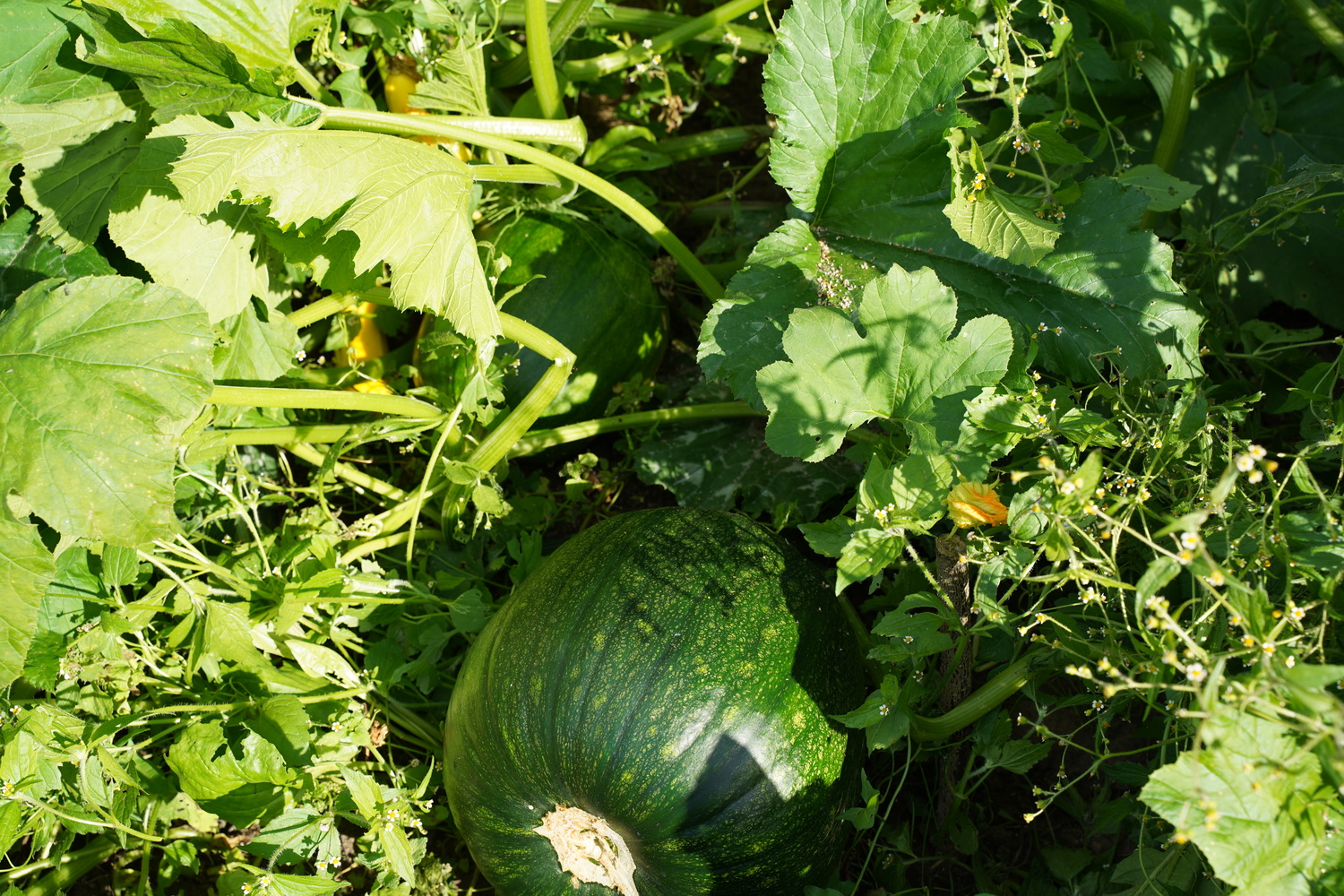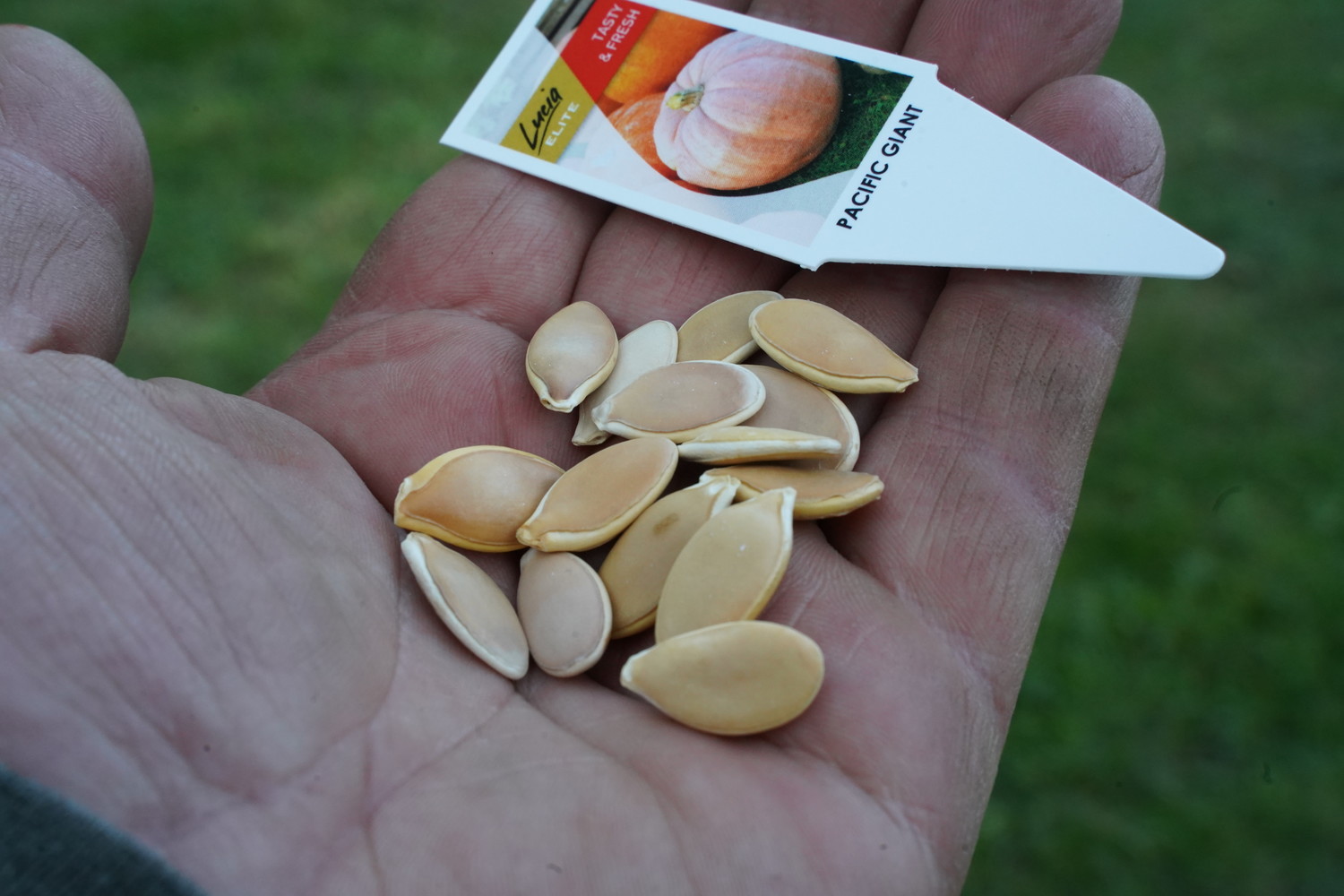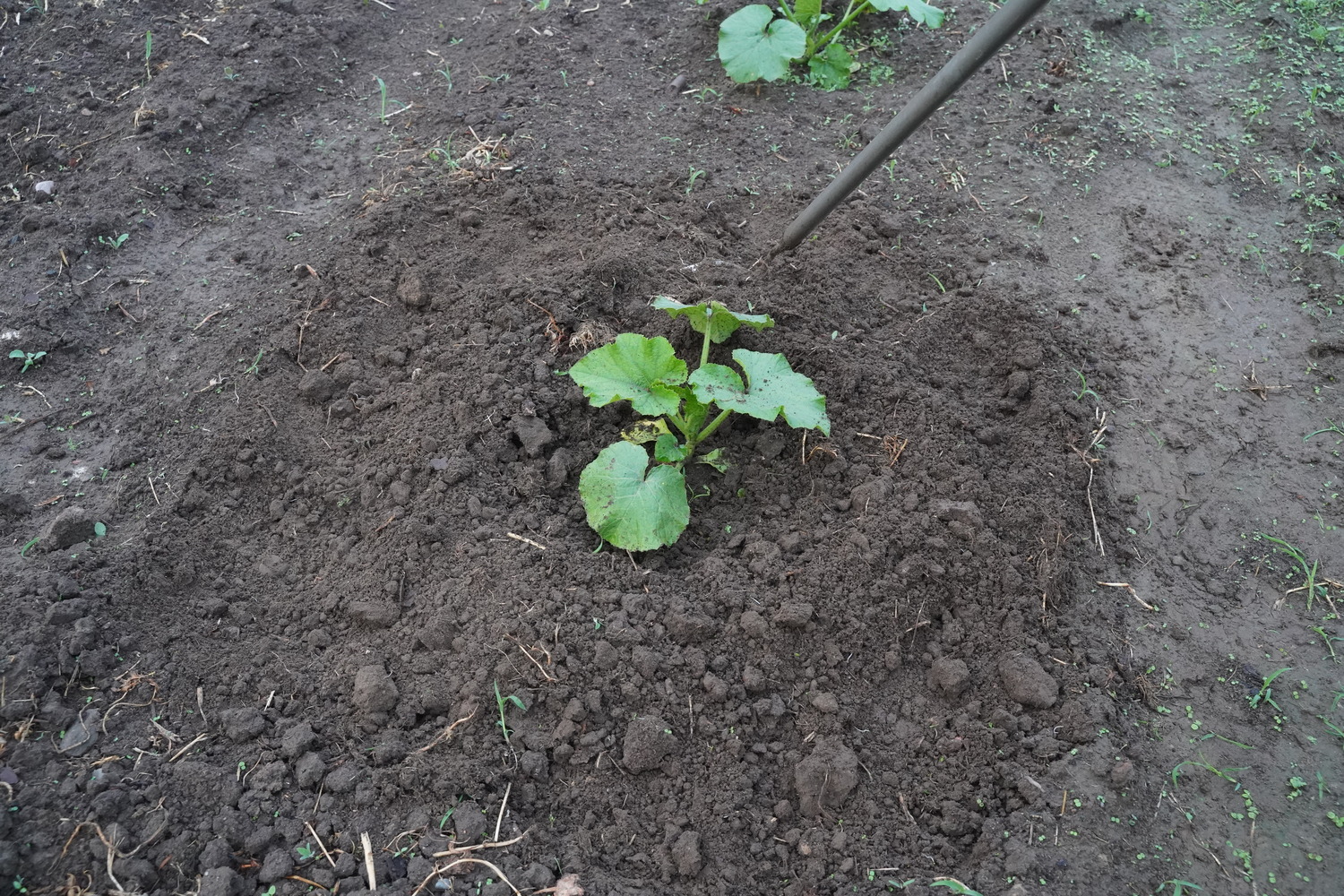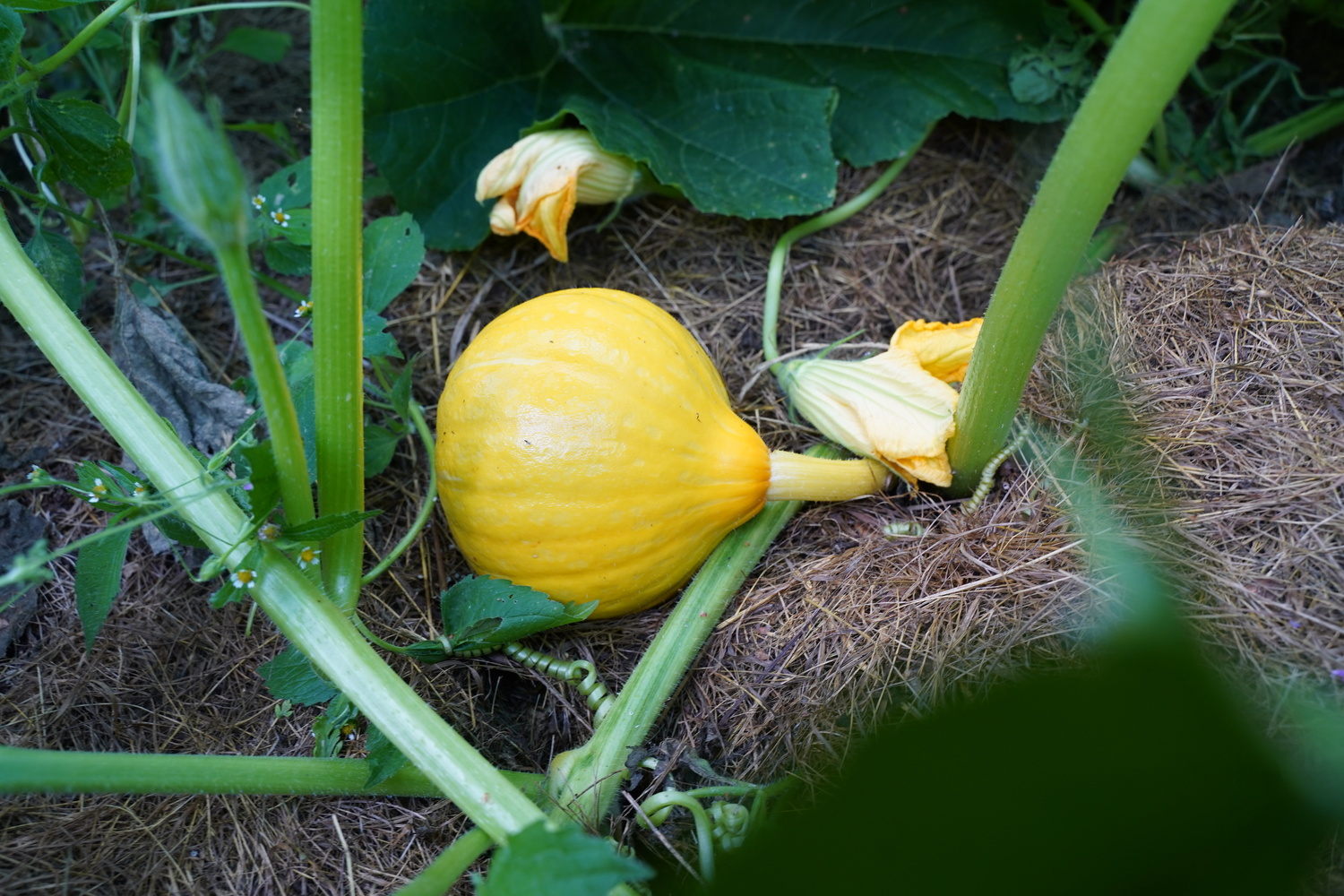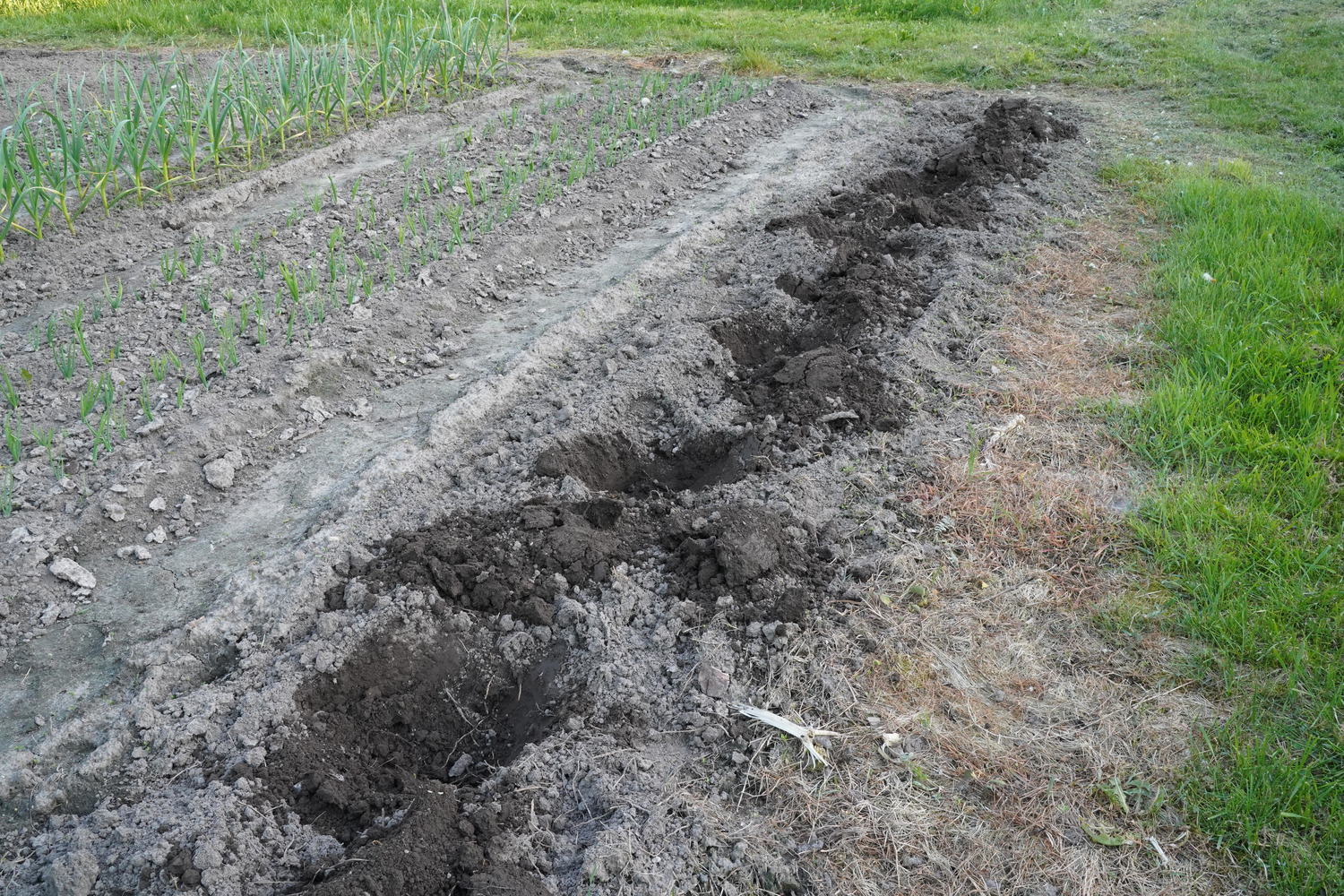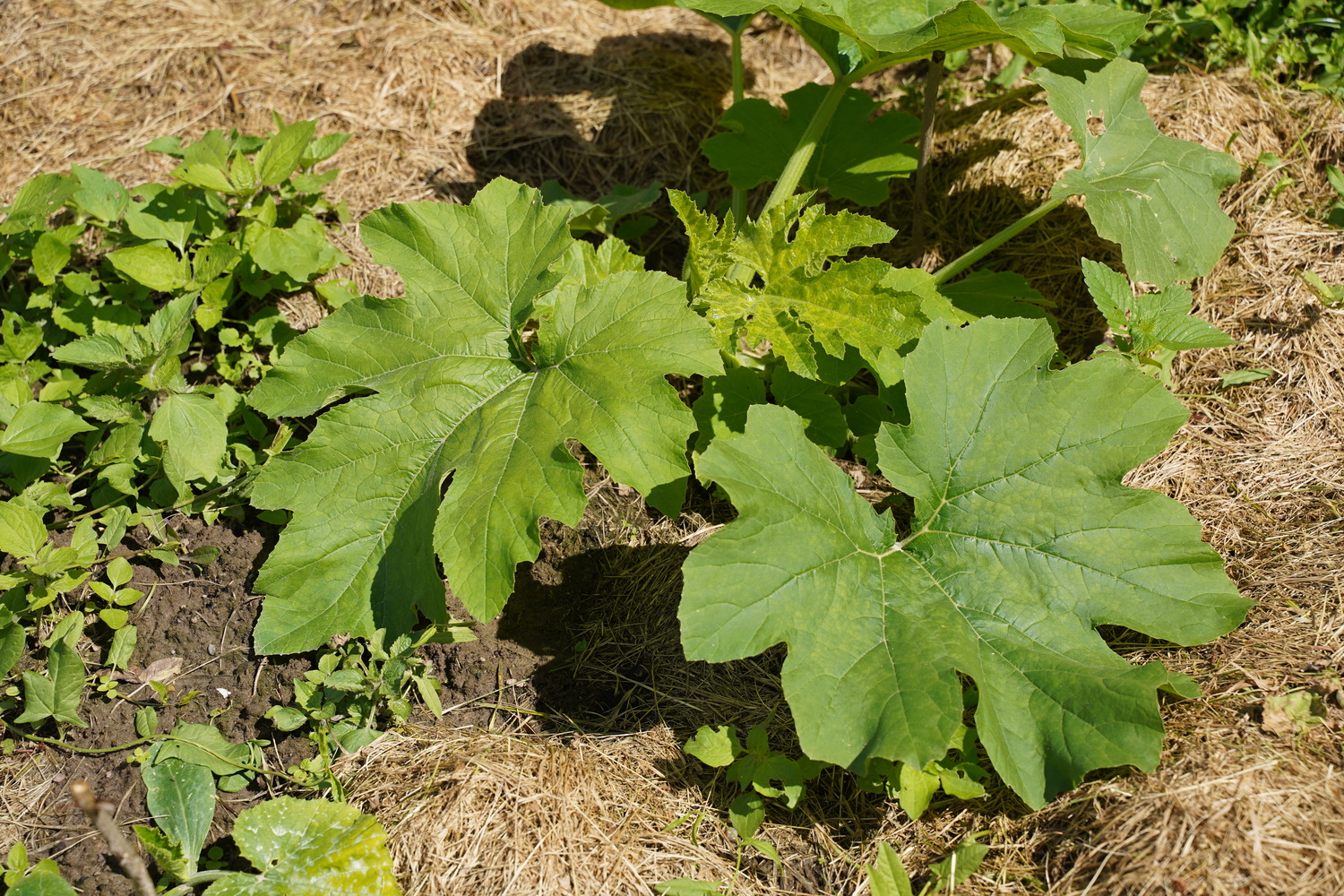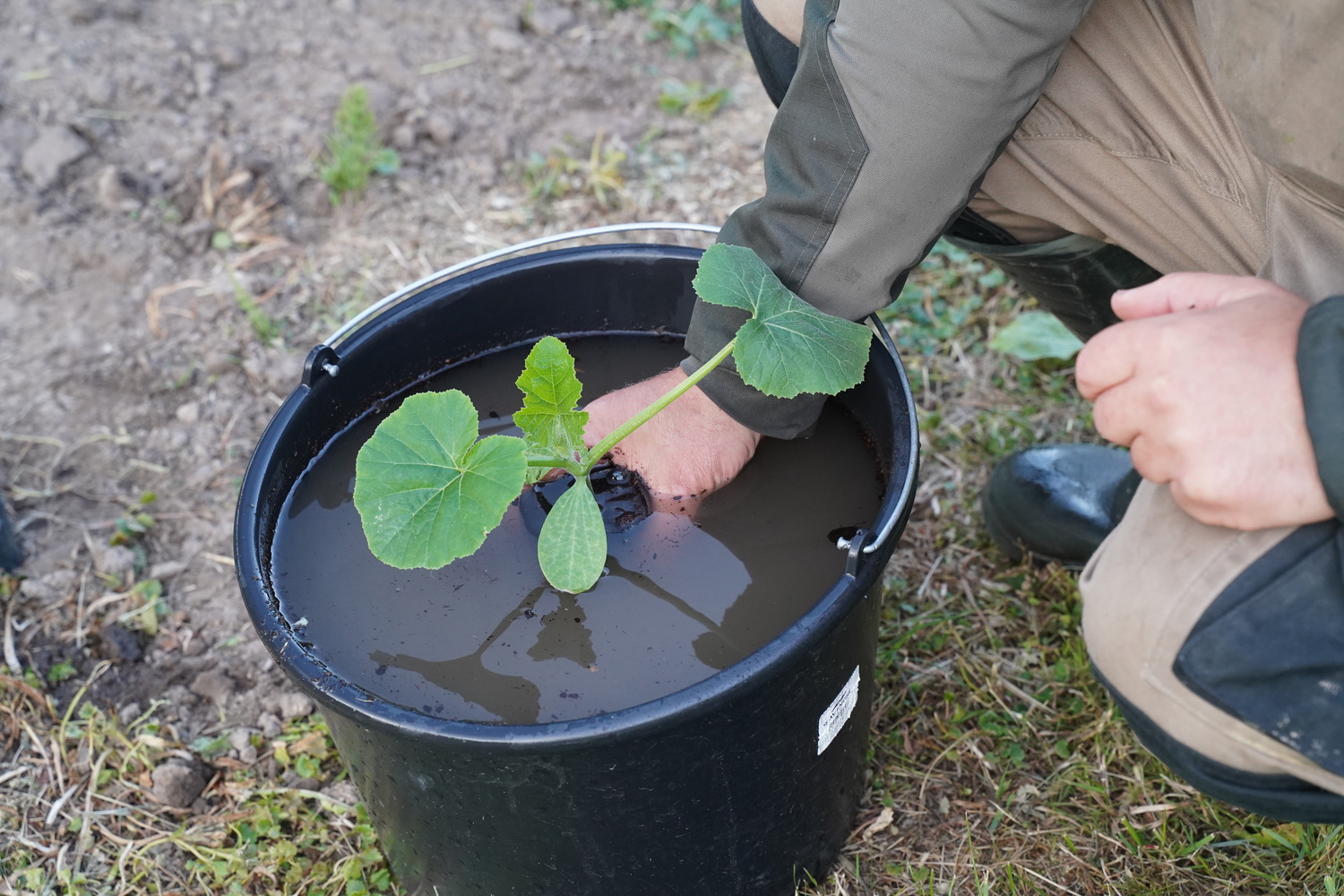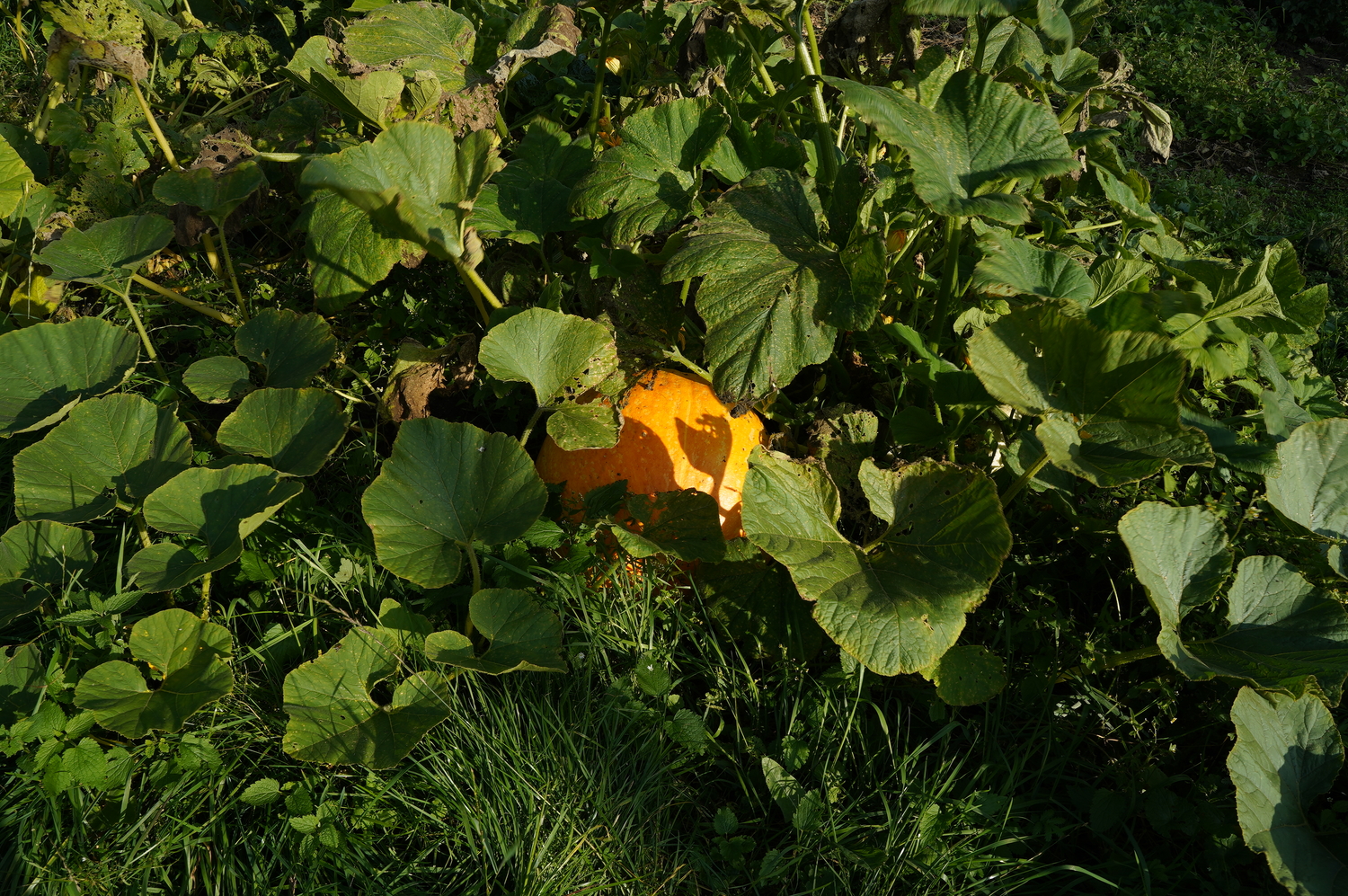Today, pumpkins are grown in almost every garden. Pumpkins are an undemanding plant that does not cause much trouble for growers. They thrive in sunny locations with fertile, loose, and sufficiently moist soil. Due to their great variety and the wide availability of different seed varieties, pumpkins are grown in almost every garden. Their vibrant colors, sizes, and shapes captivate growers, while their diverse culinary uses attract food lovers.
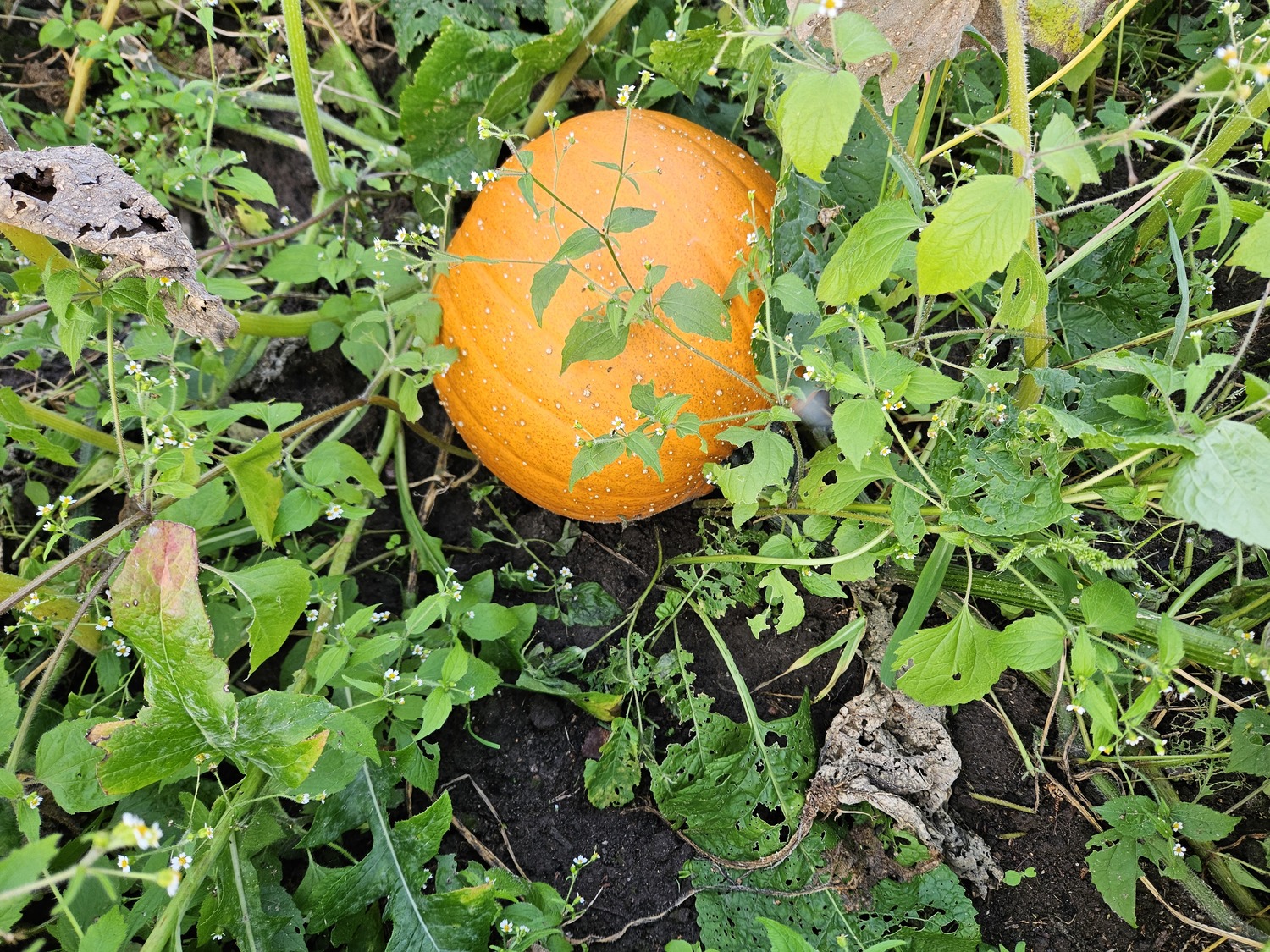
Benefits of Pumpkins
The world is fascinated by pumpkin growing, with numerous countries organising pumpkin festivals and competitions for the largest pumpkin every year. However, we should appreciate not only their beauty and size but also their benefits: pumpkins are used in cosmetics, oil production (black gold), medicine, and various gourmet dishes.
In late autumn and winter, when the selection of fresh vegetables is limited, pumpkins become especially valuable due to their high carotene content. Some varieties contain twice as much as carrots. They are also rich in vitamins C, B, B2, PP, E, and D, as well as potassium, phosphorus, calcium, magnesium, copper, and cobalt. Among all vegetables, pumpkin contains the highest amount of iron, making pumpkin-based dishes recommended for those suffering from anemia and atherosclerosis.
Since pumpkin fiber is non-fibrous, it cooks well and is easily digested, making it particularly beneficial for digestion. This vegetable regulates digestion and helps prevent cardiovascular diseases and hypertension. It is also beneficial for liver and kidney diseases. Pumpkins are a versatile food that improves metabolism and has properties that promote the removal of excess fluids from the body.
Pumpkin seeds are rich in fats, proteins, vitamins, and minerals, especially vitamin E and zinc, which have a positive effect on men's health and are used as a preventive measure against prostate diseases.
There are over a hundred species of pumpkins worldwide. They come in a wide range of colors, shapes, and sizes—some even resemble horns or bottles rather than traditional vegetables. These pumpkins are usually smaller, bumpy, with very hard skin and little flesh, often considered inedible and used for decoration. However, they are great for consumption, as their flesh, like other pumpkins, is easily digestible and absorbable.
Some varieties resemble toy rattles because, when dried, they harden, and the seeds inside rattle when shaken. However, while still fresh, they can also be used as food.
How to Grow Pumpkins
Growing pumpkins is not difficult, but before planting this vegetable, it is important to remember that these plants require quite a bit of space. Many people plant them on compost heaps, where they can spread freely and take up more space. They prefer loose and fertile soils, although they tolerate less fertile ones. In that case, the yield may be smaller. When planted from seeds, these plants grow quickly and easily, and they particularly enjoy sunny and warm places.
The ideal temperature for growing pumpkins is 25-26°C in sunny soil, although they can also tolerate a bit of shade. It is necessary to loosen the soil constantly (carefully, to avoid damaging the roots) and, if needed, apply special fertilisers. Pumpkins are very sensitive to moisture, so they must be watered when the soil is dry.
It is recommended to sow pumpkins when the soil warms up to 11-13°C, which is usually at the end of May when the common lilac blooms, after the danger of frost has passed, or even in the first days of June. Before sowing, it is essential to thoroughly loosen the soil. However, it is best to plant pre-sprouted seeds, as they will sprout 4-6 days earlier. The seeds should be soaked in warm water for 2-3 hours, then wrapped in a damp cloth and kept at room temperature for one or two days. It is worth knowing that pumpkin seeds remain viable for up to eight years. It is recommended to sow pumpkins in boxes indoors or in a greenhouse at a depth of 3-5 cm. When the pumpkins develop 2-3 true leaves, only the strongest seedlings should be left, and the others should be removed.
Pumpkins develop a very wide root system, so the seeds should be planted with a spacing of 1.4 x 1.4 m or 1.4 x 2.1 m at a depth of 5-8 cm. However, to achieve an early and abundant pumpkin harvest, seedlings grown in peat pots with 2-3 true leaves should be planted in early or mid-June at the same spacing as when sowing seeds.
The plant needs to be properly shaped to grow larger fruits and to help them ripen faster. The largest yield is produced by the main vine, so growing side shoots is not recommended: the fruits will ripen more slowly or may not ripen at all. It is recommended to grow no more than 2-4 fruits on each pumpkin plant. This way, the fruits grow very large, and the overall yield per plant is not reduced. Unwanted fruits should be removed when the remaining ones have grown to the size of a tennis ball. At the same time, the stems should be shortened, leaving two leaves above the last fruit. While the pumpkin leaves cover the soil, the inter-rows should be loosened, weeds should be removed, and if it’s dry, watering is essential.
Pumpkins, like other crops, can be affected by pests and diseases. Slugs cause significant damage to crops by gnawing at the plants down to the stem, so these pests need to be controlled intensively. The most common disease of pumpkins is the cucumber mosaic virus, which causes the leaves to become spotted and the fruits to deform. In case of infection, all infected pumpkins should be destroyed. In dry years, powdery mildew may become a problem, but it usually does not cause much damage. To prevent the spread of diseases, preventive measures are essential—properly tilling the soil, watering, and maintaining the recommended spacing so that the pumpkins don’t overcrowd and allow air to circulate freely between them.
After harvesting, the chemical composition of pumpkins remains unchanged during storage, and the fruits of some varieties even become tastier. The pumpkin consists of 17% skin, about 73% flesh, and only 10% seeds. All parts of the plant are edible and nutritious, rich in vitamins and carbohydrates. Pumpkin seeds contain up to 70% fats, amino acids, and vitamins A and E. The seed oil is cold-pressed and is dark green with a nutty taste. Due to its nutritional properties, it is often compared to sesame seed or walnut oil.
Soil for Pumpkins
Pumpkins grow well in fertile, slightly humus-rich, non-acidic, loose, and fast-warming soil. The soil for pumpkins should be deeply tilled. Pumpkins love warmth, so they should be planted in a sheltered, well-lit, sunny, and warm location. It is best to grow pumpkins after perennial grasses, cereals, potatoes, cabbage, or legumes. To avoid diseases and pests, pumpkins should not be planted in the same place where cucumbers, zucchini, or pattypans previously grew.
Pumpkins are negatively affected by growing near potatoes, while they benefit from being planted alongside beans and corn (in many parts of the world, pumpkins are grown together with corn, resulting in a significant increase in the yield of both).
Pumpkin Fertilisation
If the soil is not very fertile, it is recommended to fertilise it well in the fall. Apply 40-60 kg of manure per 10 m², 400 g of potassium chloride, and 600 g of superphosphate. In the spring, before sowing pumpkins, apply 300 g of ammonium nitrate. To achieve a higher yield, it is recommended to fertilise pumpkins additionally. The first fertilisation can be done 7-10 days after transplanting the seedlings or three weeks after sowing. A solution of water and well-rotted manure or complex fertilisers with microelements is suitable. Plants should only be fertilised in warm weather; otherwise, the fertilisation will be ineffective, and the plants will not absorb the nutrients.
Pumpkins can be regularly watered with a solution of water and wood ash, which is rich in potassium sulfate (10 liters of water and 1 glass of ash), or with liquid organic fertilisers prepared from nettles. To make the nettle solution, place 1 kilogram of freshly picked nettles in a covered container with 10 liters of water and let it sit for several weeks, stirring occasionally with a wooden spoon. Afterward, strain the liquid and dilute it with water (in a 1:10 ratio) to water the pumpkins.
Harvesting and Storing Pumpkins
Pumpkins are very sensitive to frost, so they should be harvested before frost occurs. Pumpkins are harvested when they reach the typical size and color for the variety. A simple test is to press the pumpkin's skin with a fingernail—if no indentation remains, the fruit is ripe. However, pumpkins intended for immediate use should not be left to overgrow; they should be harvested while the skin is still young.
Pumpkins are harvested at the end of September, before the frost, and only on sunny days. The fruits are cut, leaving a 10-15 cm stem, as pumpkins without a stem are more difficult to store. Harvested pumpkins are dried in the sun for a few days. Even those harvested before fully ripening will finish ripening in a well-ventilated room with a temperature of 3°C and 60-75% relative humidity, and they will last until December. Fully ripened pumpkins will store well until May, and their taste improves as starch gradually turns into sugar. It is important to regularly check that the pumpkins are not rotting. Stored pumpkins should not touch each other.
If you grow pumpkins in your garden, you'll have plenty of ingredients to make salads, stews, soups, porridges, jams, marmalades, pies, casseroles, press juices, or candied pumpkins. You can also enjoy the highly nutritious pumpkin seeds. Planting pumpkins on a compost heap not only hides it but also decorates it. Plus, your children will be especially delighted with the ripe decorative pumpkins.

